Updating vinyl siding enhances a home’s appearance and boosts its durability and energy efficiency. Vinyl siding is a popular choice for exterior home protection due to its affordability, low maintenance, and variety of color options. However, over time, siding can experience wear from weather conditions, sun exposure, or physical impact, leading to issues such as fading, cracking, or warping.
This guide will walk you through everything needed to update vinyl siding, covering material selection, cost considerations, and step-by-step instructions. Whether planning a full replacement, repairing damaged sections, or simply refreshing the look, this guide provides clear, practical advice for homeowners to achieve a high-quality result.
Why Update Vinyl Siding?
Updating vinyl siding offers numerous benefits, from improving a home’s visual appeal to enhancing its structural integrity and energy efficiency. Vinyl siding updates can correct wear issues like fading, cracking, and warping, which develop over time due to exposure to the sun, wind, and moisture. By addressing these concerns, homeowners can prevent further deterioration and avoid costly repairs.
What Are the Key Benefits of Updating Vinyl Siding?
- Enhanced Curb Appeal: Fresh, undamaged siding improves a home’s exterior, increasing its attractiveness and potential market value.
- Increased Energy Efficiency: Newer vinyl siding options often come with improved insulation properties, helping regulate indoor temperature and reduce energy bills.
- Improved Weather Resistance: Updated siding provides better protection against rain, wind, and other environmental elements, safeguarding the home’s structure.
- Lower Maintenance Requirements: Modern siding materials require less upkeep, offering a durable solution that resists mold, mildew, and other common issues.
- Potential Resale Value Boost: Well-maintained and attractive siding can enhance a home’s resale value by making it more appealing to prospective buyers.
Updating vinyl siding can be an effective investment that brings aesthetic, financial, and protective benefits to homeowners.
Assessing the Condition of Your Current Vinyl Siding
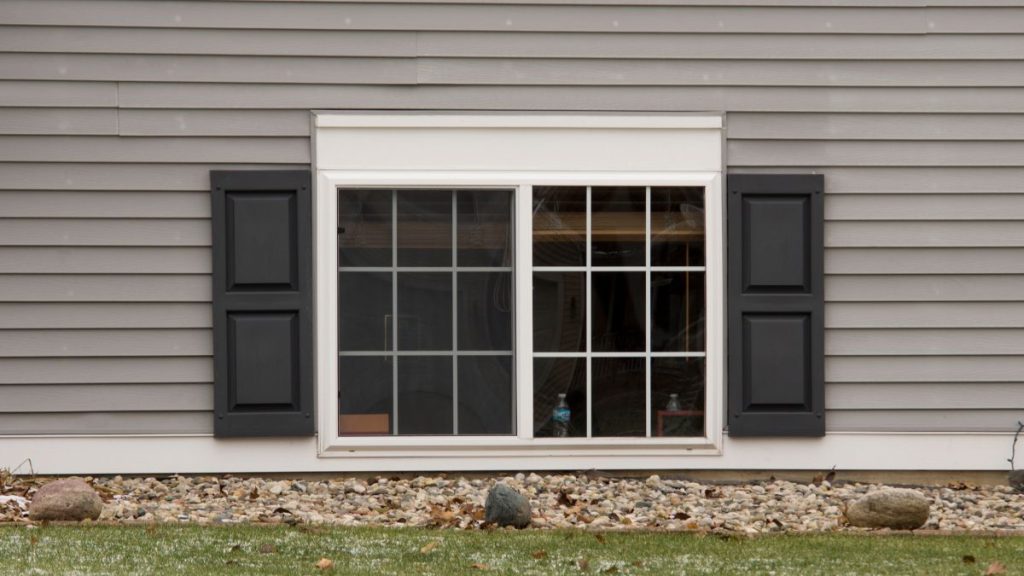
Before updating vinyl siding, evaluating its current state is essential to identify areas that need repair, replacement, or a thorough cleaning. By assessing the siding, you can determine the best approach for updates, avoiding unnecessary costs and ensuring long-lasting results.
Inspecting for Physical Damage
Look closely for cracks, dents, and chips on the siding panels, especially near corners and edges, where damage is more common. Physical damage can allow moisture and pests to penetrate, affecting the home’s structure. Check for warping or buckling as well, which may indicate improper installation, water infiltration, or exposure to extreme heat. Minor issues may be repairable, but extensive physical damage might require replacing sections of the siding.
Checking for Fading and Discoloration
Over time, exposure to sunlight and weather can cause fading and uneven discoloration in vinyl siding. Faded siding affects curb appeal and can signify weakened materials, making it more susceptible to further damage. Fading might be corrected with a fresh coat of paint or by replacing faded panels with newer materials, depending on the extent of discoloration and the desired outcome.
Identifying Signs of Mold, Mildew, and Algae
Examine the siding for signs of mold, mildew, or algae growth, particularly in shaded or moisture-prone areas. Mold and mildew appear as dark or greenish spots, indicating moisture trapped within or behind the siding. Promptly address these issues to prevent further spread, which could compromise both the siding and the structure behind it. Mold and mildew can often be cleaned, but if growth is extensive, consider replacing affected panels.
Assessing Structural Integrity and Secure Attachment
Check that each panel is securely attached and properly aligned. Loose or misaligned panels can allow water and debris to enter, which may damage underlying materials. Pay attention to any loose nails, screws, or fasteners, as these can create gaps that reduce the siding’s overall effectiveness. Ensuring the siding is securely attached and structurally sound is crucial for effective insulation and weather resistance.
Testing for Insulation Effectiveness
Consider the insulation quality of the current siding, especially if the home feels drafty or if energy bills are unusually high. Vinyl siding with added insulation helps maintain indoor temperatures by reducing heat transfer, which can lower energy costs. If the existing siding lacks insulation or if gaps have formed, upgrading to insulated vinyl siding or adding insulation during the update may significantly improve energy efficiency.
Choosing the Right Materials for Updating Vinyl Siding
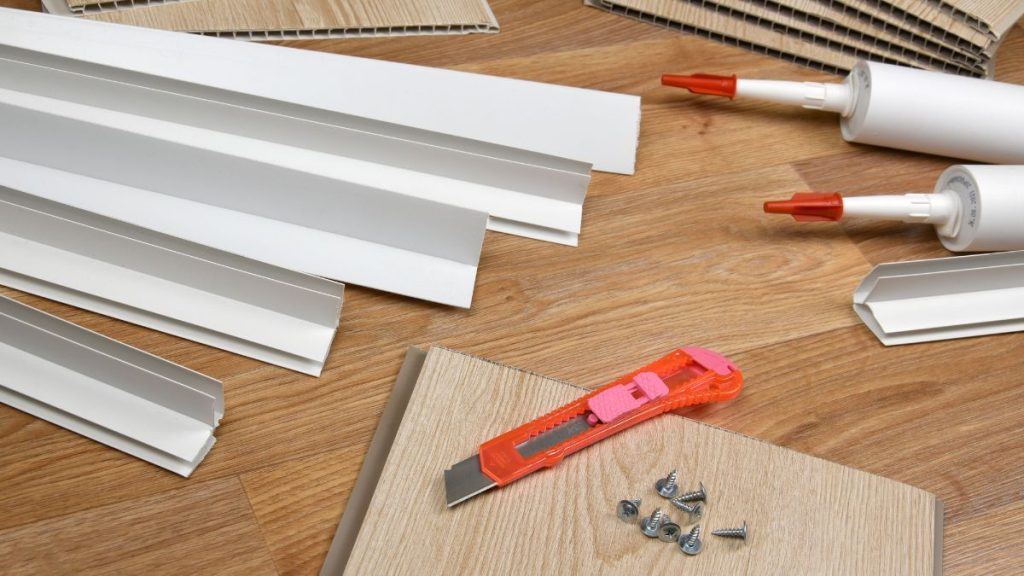
Selecting the right materials is essential to ensure your vinyl siding update provides durability, enhances curb appeal, and suits your budget. The materials you choose can also impact energy efficiency and the level of maintenance required over time.
Types of Vinyl Siding Options
When updating, consider various vinyl siding types, such as traditional lap siding, Dutch lap, vertical, and shingle-style. Traditional lap siding is commonly used and provides a classic, horizontal look, while Dutch lap siding offers a more pronounced shadow line for added depth. Vertical siding is ideal for accent areas or modern aesthetics, and shingle-style siding replicates the look of cedar shingles, adding texture and character. Each type varies in appearance and cost, so choose one that aligns with your home’s style and budget.
Selecting the Right Color and Finish
Color plays a crucial role in updating vinyl siding, as it directly affects the home’s curb appeal. Neutral colors like beige, gray, and white offer a timeless look, while darker shades, such as charcoal or navy, add modern appeal. Many manufacturers offer UV-resistant colors to prevent fading from sun exposure. For the finish, matte options provide a subtle look, while gloss finishes add vibrancy and a polished appearance. Ensure the color and finish you choose complement the home’s exterior elements, like roofing, windows, and landscaping.
Choosing Insulated vs. Non-Insulated Siding
Insulated vinyl siding has a layer of foam backing that helps improve energy efficiency, reduce noise, and enhance durability. This siding type is beneficial in colder climates, where extra insulation can lower heating costs, and in areas with high noise levels. Non-insulated siding is generally more affordable and works well for moderate climates. Weigh the initial costs against long-term energy savings to decide if insulated siding is the right option for your update.
Evaluating Material Durability and Warranty
Consider the durability of the vinyl siding material, especially if your region experiences extreme weather conditions. High-quality vinyl siding resists impact, fading, and warping better than lower-grade materials. Review the warranty offered by the manufacturer, as it often reflects the product’s expected lifespan. Some manufacturers provide warranties covering color fading and cracking, which can be beneficial for maintaining the siding’s appearance and functionality over time.
Comparing Costs and Budget Considerations
When selecting materials, calculate the overall costs of siding, including labor, additional insulation, and installation materials, to stay within budget. Non-insulated siding options are generally less expensive, while specialty finishes or premium colors may increase costs. Obtain multiple quotes from contractors to compare pricing and evaluate any additional fees for removing old siding, repairing underlayment, or adding insulation. A well-defined budget helps in making informed choices that balance aesthetics, functionality, and cost.
Cost Considerations
Updating vinyl siding involves various costs, including materials, labor, and potential additional expenses. Understanding these factors allows for effective budgeting and helps prevent unexpected expenses during the project.
Breakdown of Material Costs
Material costs for vinyl siding vary based on siding type, quality, and additional features. Standard non-insulated vinyl siding is generally the most affordable, while insulated siding, specialty finishes, and thicker panels can increase the price. Basic vinyl siding averages around $2 to $6 per square foot, while premium or insulated options can range from $5 to $12 per square foot. Calculate the amount needed based on the home’s square footage to estimate total material costs accurately.
Labor and Installation Fees
Labor costs depend on the project’s complexity, contractor rates, and regional pricing. Simple installations on single-story homes are typically less expensive, while complex architectural features, multi-story homes, or areas requiring scaffolding increase labor costs. On average, expect to pay between $1 to $4 per square foot for installation. Discussing rates with multiple contractors can help find the best value without compromising quality.
Additional Expenses: Insulation, Fasteners, and Tools
If you’re opting for insulated siding or planning to add extra insulation beneath the vinyl panels, this will add to your expenses. Additionally, budget for fasteners, adhesives, nails, and specialized tools required for the installation. Some of these items may already be included in the contractor’s estimate, while others may be added as separate charges. Insulation can add approximately $1 to $2 per square foot, while fasteners and tools vary based on brand and quality.
Cost of Removing Old Siding
If the existing siding needs removal, factor in the cost of disposal and labor for this part of the project. Removal typically costs between $0.50 to $1 per square foot, depending on the type and condition of the old siding. In cases where structural repairs are required after removal, expect additional costs. Confirm with the contractor if removal and disposal fees are included in the initial estimate.
Budgeting for Unexpected Repairs
During the installation process, unexpected issues such as damaged sheathing, moisture problems, or pest infestations may arise. These repairs are essential to ensure the new siding functions effectively and lasts long. Setting aside a contingency fund of around 10-15% of the total project budget can cover these unforeseen expenses, allowing the project to proceed smoothly without compromising quality.
Related Post: How to Fix Siding Too Close to Ground
Step-by-Step Guide to Updating Vinyl Siding

Updating vinyl siding requires careful planning and proper technique to ensure a durable and visually appealing result. This step-by-step guide outlines each stage of the process, helping you achieve a professional-quality update.
Step-1: Preparing for Installation
Proper preparation ensures a smooth installation and minimizes potential issues later in the project.
Inspect and Clean the Exterior Surface
Start by inspecting the exterior walls for damage, such as cracks or moisture issues, and address any repairs before installation. Clean the surface to remove dirt, mildew, and debris, using a pressure washer if needed. A clean surface helps new siding adhere better and look more polished.
Gather All Necessary Tools and Materials
Prepare all required tools and materials in advance, including measuring tape, level, utility knife, fasteners, nails, and siding panels. Having materials ready minimizes interruptions and maintains workflow, ensuring the installation proceeds efficiently.
Secure Permits and Permissions
Depending on local regulations, you may need permits before starting the project. Contact your local building authority to confirm any permit requirements and secure them ahead of time to avoid potential delays or fines.
Step-2: Removing Old Siding (If Necessary)
If updating existing vinyl siding or replacing a different material, proper removal is essential to prepare for the new siding.
Detach Siding Panels Carefully
To remove old siding, use a siding removal tool or pry bar to lift each panel carefully, avoiding damage to the underlying wall structure. Begin at the top and work downward, ensuring each piece is removed without tearing or breaking.
Dispose of Debris Safely
Dispose of old siding and debris according to local regulations. Arrange for a dumpster or waste removal service if needed to ensure safe and efficient disposal, keeping the work area clear and hazard-free.
Step-3: Installing New Siding Panels

Proper installation is crucial for durability and aesthetics, with each step ensuring a solid fit and secure attachment.
Measure and Cut Panels to Fit
Measure the dimensions of each section where siding will be installed, and cut panels precisely to fit. Use a utility knife or circular saw with a fine-tooth blade for clean cuts. Ensure accurate measurements to avoid gaps and misalignments.
Attach Panels Using Recommended Fasteners
Starting from the bottom, attach the siding panels using nails or screws, leaving slight gaps for expansion and contraction. Follow the manufacturer’s recommendations for fastener spacing and depth to avoid over-tightening, which can warp the siding.
Overlap Panels to Prevent Moisture Penetration
Each panel should overlap slightly with the previous one to create a watertight seal. This overlap prevents water from entering behind the siding, reducing the risk of moisture-related damage to the home’s structure.
Step-4: Finishing Touches
Final adjustments and sealing details ensure the siding looks complete and protects the structure effectively.
Seal Edges and Corners
Use silicone caulk or specialized sealants to secure edges and corners, preventing water intrusion and improving insulation. Pay close attention to areas around windows, doors, and other openings.
Add Trim and Decorative Elements
Once the main siding panels are in place, add trim around doors, windows, and corners for a polished look. Decorative elements like shutters or accent panels can enhance curb appeal and give the home a unique, finished appearance.
Inspect the Finished Installation
Conduct a thorough inspection to ensure panels are securely attached, seams are sealed, and trim is in place. Address any gaps, loose fasteners, or irregularities promptly to prevent potential issues.
Recommended: T1 11 Siding Installed Horizontally
Pros and Cons of Different Updating Methods
When updating vinyl siding, different methods offer various advantages and challenges. Here’s a detailed look at each approach to help you choose the best one for your needs.
Repainting Vinyl Siding
Repainting vinyl siding is a cost-effective way to refresh your home’s exterior without a full replacement.
Pros of Repainting Vinyl Siding
- Cost-Effective: Painting is generally less expensive than replacing the siding, making it a budget-friendly option.
- Quick Transformation: A fresh coat of paint can dramatically change the home’s appearance in a shorter time than replacing panels.
- Customizable Colors: Paint allows for a wider range of color options than the limited pre-colored vinyl siding.
Cons of Repainting Vinyl Siding
- Shorter Lifespan: Painted siding may need touch-ups or re-painting every 5-10 years, unlike vinyl’s 20-40 year lifespan.
- Requires Maintenance: Painted surfaces are more prone to chipping, fading, and peeling over time, requiring ongoing maintenance.
- Potential for Peeling: If not properly prepared, paint may peel or crack due to vinyl’s tendency to expand and contract.
Installing New Vinyl Siding Over Old Siding
Installing new vinyl siding over existing siding can save time and money, but it’s important to consider its limitations.
Pros of Installing New Vinyl Over Old Siding
- Time-Saving: Skipping the removal process speeds up the installation.
- Cost Savings: Saves on labor and disposal costs associated with removing old siding.
- Extra Insulation: The additional layer can provide better insulation and increase energy efficiency.
Cons of Installing New Vinyl Over Old Siding
- Added Weight: Double layers of siding add weight to the structure, potentially causing stress over time.
- Traps Moisture: If moisture becomes trapped between layers, it can lead to mold growth or damage.
- Irregular Surface: Existing imperfections may affect the appearance and fit of the new siding.
Replacing Old Vinyl Siding Completely
Removing and replacing old siding offers a fresh start with numerous customization options but comes with higher costs.
Pros of Replacing Old Vinyl Siding
- Improved Curb Appeal: Full replacement provides a fresh look, boosting curb appeal and potential resale value.
- Enhanced Durability: New siding eliminates any wear or damage present in the old siding, offering better protection.
- Opportunity for Insulation: Removing old siding allows the installation of new insulation, improving energy efficiency.
Cons of Replacing Old Vinyl Siding
- Higher Cost: Full replacement is the most expensive method, involving labor, disposal, and material costs.
- Time-Consuming: Removal and reinstallation take more time compared to other methods.
- Permit Requirements: Full replacement may require permits, adding to the time and administrative steps involved.
Using Siding Panels with Insulated Backing
Siding panels with built-in insulation are a modern solution that combines aesthetic appeal with enhanced energy efficiency.
Pros of Insulated Siding Panels
- Increased Energy Efficiency: Insulated panels provide added thermal resistance, helping reduce heating and cooling costs.
- Enhanced Noise Reduction: Insulation can dampen outside noise, improving indoor comfort.
- Improved Durability: The added backing provides better impact resistance, extending the siding’s lifespan.
Cons of Insulated Siding Panels
- Higher Material Cost: Insulated panels are more expensive than standard siding, increasing overall project costs.
- Requires Skilled Installation: Installation can be complex, often requiring skilled professionals to ensure proper fit and performance.
- Limited Design Options: Available colors and styles may be more limited than standard vinyl siding panels.
Applying Vinyl Siding Wraps or Skins
Vinyl siding wraps or skins can be an affordable option for giving siding a facelift without major renovations.
Pros of Applying Siding Wraps or Skins
- Low Cost: Wrapping is usually cheaper than replacement or insulated panels.
- Quick Application: Wraps can often be applied in a shorter time, reducing labor expenses.
- Variety of Designs: Many styles and patterns are available, allowing for a custom look.
Cons of Applying Siding Wraps or Skins
- Shorter Lifespan: Wraps are generally less durable, requiring replacement or maintenance sooner than standard siding.
- Prone to Damage: Wraps may be more susceptible to weather damage, especially in extreme conditions.
- May Trap Moisture: Improper installation can lead to moisture issues between the wrap and original siding.
Read Also: Brick to Siding Transition
FAQs
How often should vinyl siding be updated?
Vinyl siding typically lasts between 20 to 40 years, depending on environmental conditions and maintenance. However, if you notice significant fading, cracks, warping, or mold, it’s a good idea to update or replace it sooner. Regular cleaning and minor repairs can extend its lifespan and delay the need for a full update.
Can you paint over existing vinyl siding?
Yes, you can paint over vinyl siding if it’s in good condition and you use a vinyl-safe paint. Painting is a cost-effective way to refresh the look without replacing the entire siding. Be sure to clean the surface thoroughly and use a paint designed for exterior vinyl to ensure durability and color retention.
What are the costs of updating vinyl siding?
Updating vinyl siding costs vary widely based on the scope, materials, and labor. On average, repainting costs $1,000–$3,000, while replacing siding can range from $5,000 to $14,000, depending on home size and material choice. Insulated siding or high-end materials will add to the cost, but can improve energy efficiency and durability.
Which materials are best for updating vinyl siding?
The best materials for updating vinyl siding depend on your budget, climate, and aesthetic goals. Options include standard vinyl for affordability, insulated vinyl for energy savings, and acrylic polymer for enhanced durability. Each material has unique benefits, so it’s important to assess the pros and cons before making a decision.
Is updating vinyl siding a DIY project, or should I hire a professional?
Minor updates like painting or repairing small sections can be DIY-friendly with the right tools and preparation. However, full replacement or large-scale updates often require professional expertise to ensure proper installation and a durable finish. Hiring a professional can help avoid costly mistakes and ensure high-quality results.
Conclusion
Updating vinyl siding can transform your home’s exterior, enhancing both its curb appeal and energy efficiency. By assessing the current condition of your siding and selecting the right materials, you can make informed decisions that align with your budget, needs, and aesthetic preferences. From repainting to full replacement or adding insulated panels, each updating method offers unique benefits and challenges.
Whether you’re tackling the project as a DIY endeavor or working with professionals, careful planning and attention to detail are key to achieving durable, high-quality results. Remember, the right choice of materials and maintenance practices can extend the life of your siding, ensuring that your home remains protected and looking fresh for years to come.

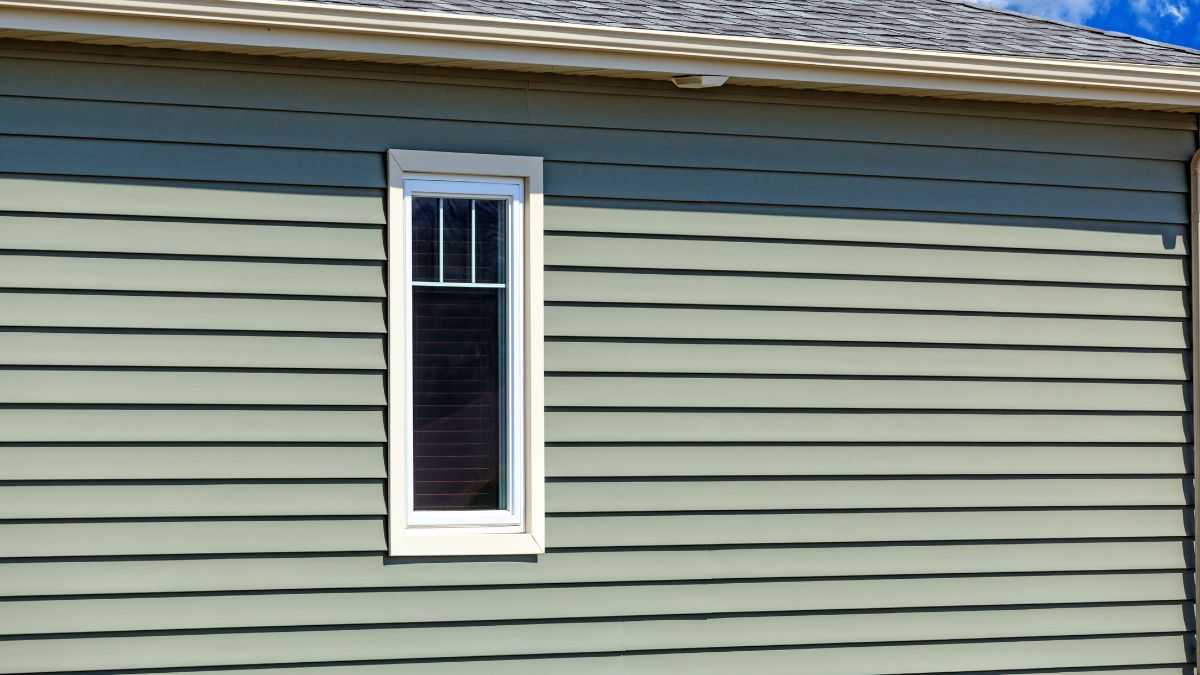
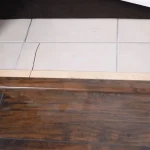
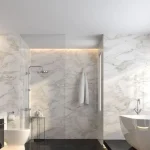
Is vinyl siding truly the best option for improving curb appeal and energy efficiency, or are there alternative materials that may provide better results in the long run?
Vinyl siding is a great option for curb appeal due to its affordability, low maintenance, and variety of styles, but it’s not the most durable or energy-efficient choice long-term. Alternatives like fiber cement or insulated vinyl siding offer better durability, weather resistance, and improved energy efficiency, though they come at a higher upfront cost. For maximum longevity and insulation, consider engineered wood or stucco, depending on your climate and budget.